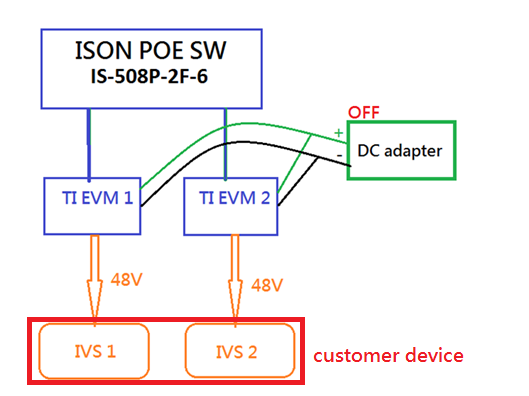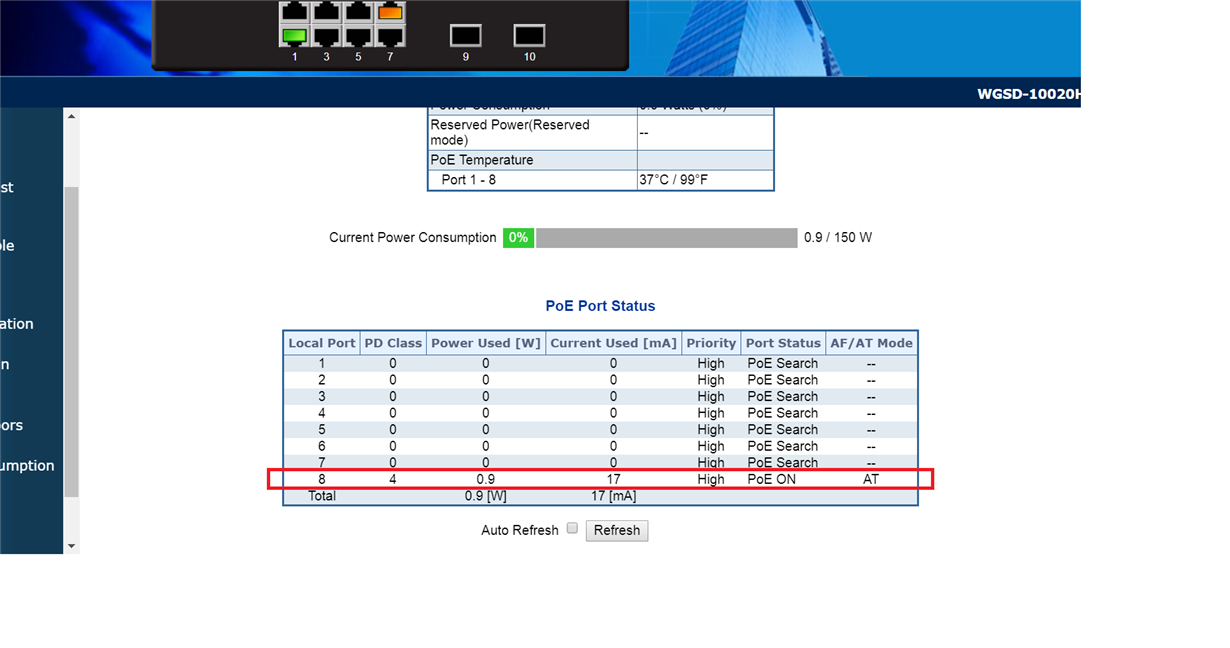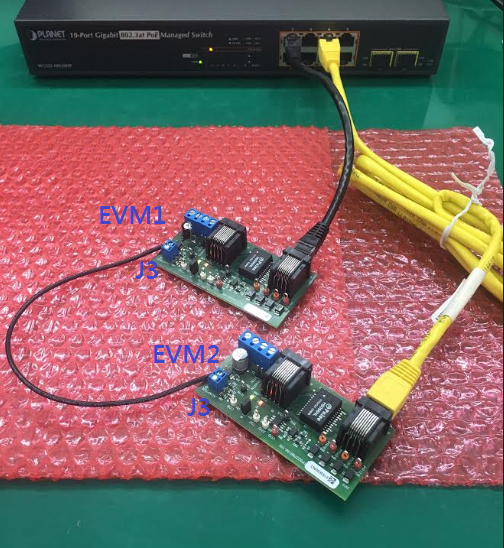Dear Sirs,
My customer connect 2pcs TPS2378 EVM with adaptor to 1 PSE at same time, and issue occurred.
1. connect 1st EVM with adaptor attached to PSE port 1
2. connect 2nd EVM with adaptor attached to PSE port 2
3. 1st EVM will lost power and start to re-communicate with PSE
4. finally only 1st EVM will seen in system
5. 2nd EVM still has power from PSE
6. after remove adaptor, everything is OK
7. customer use 3 type PSE for test and face same issue
ISON (IS-508P-2F-6)
ZyXEL (GS1100-8HP)
PLANET (WGSD-10020HP)
8. customer function block as below
Please help to give me idea to address this issue.
Thanks.





